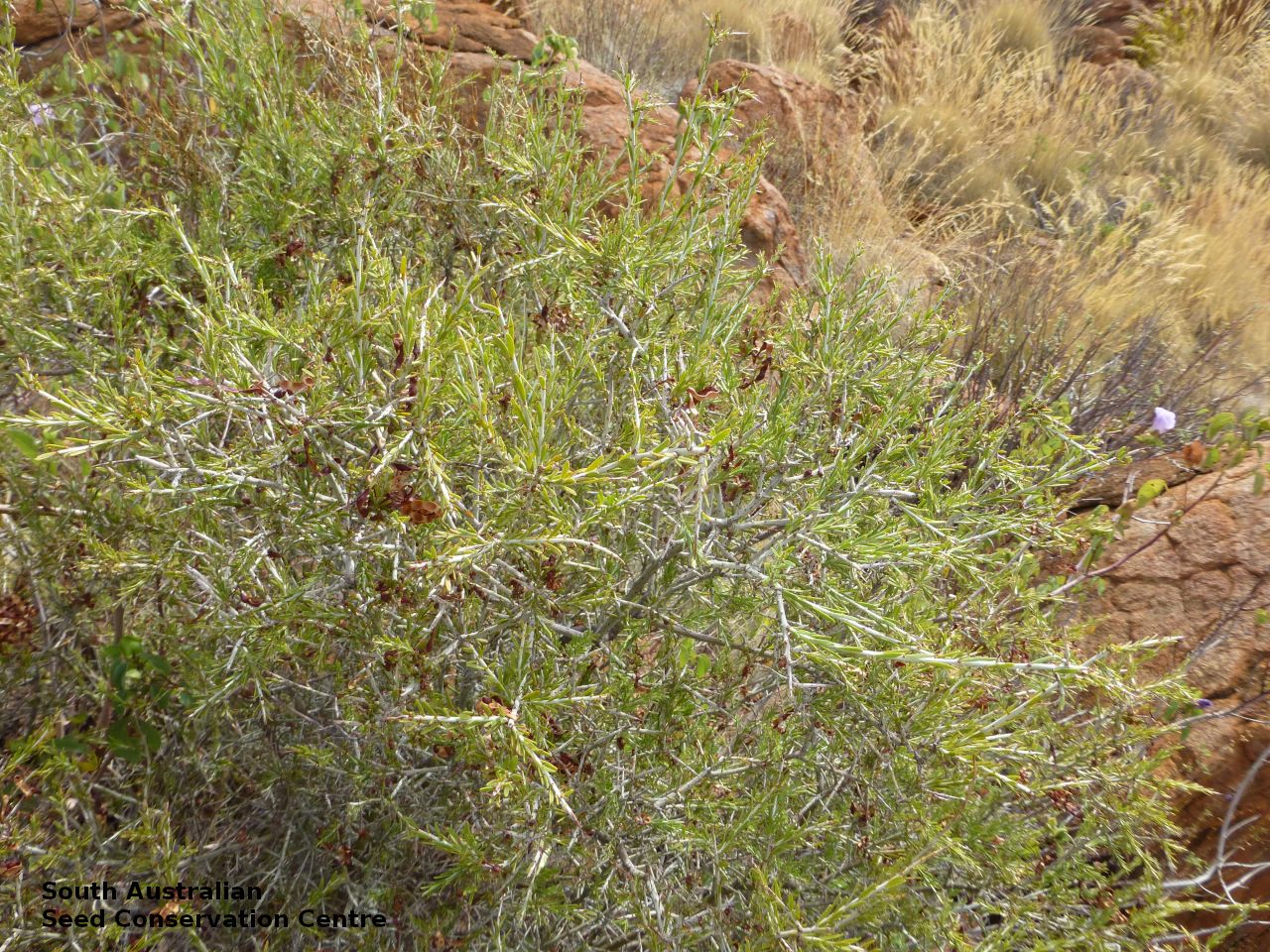
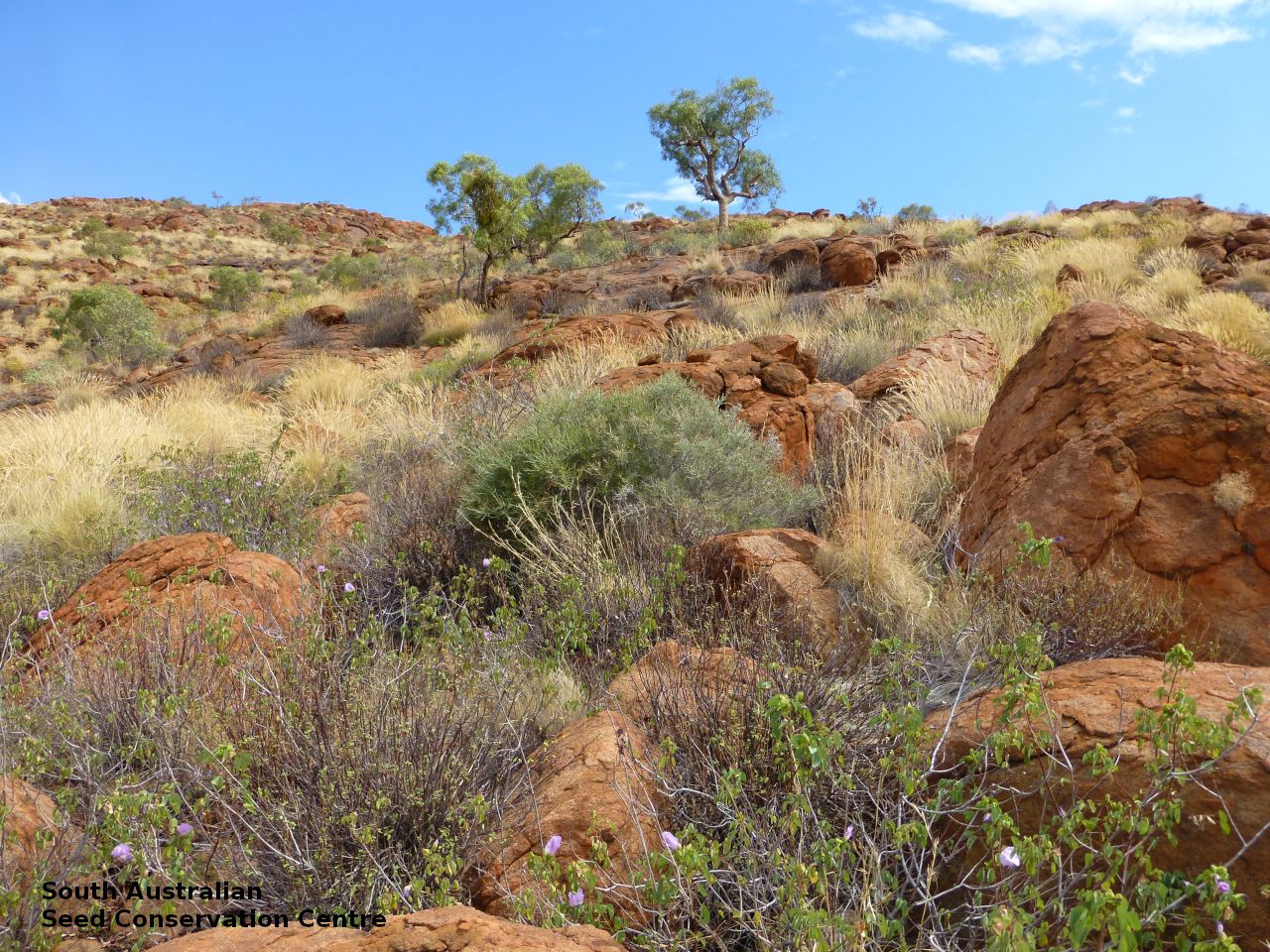
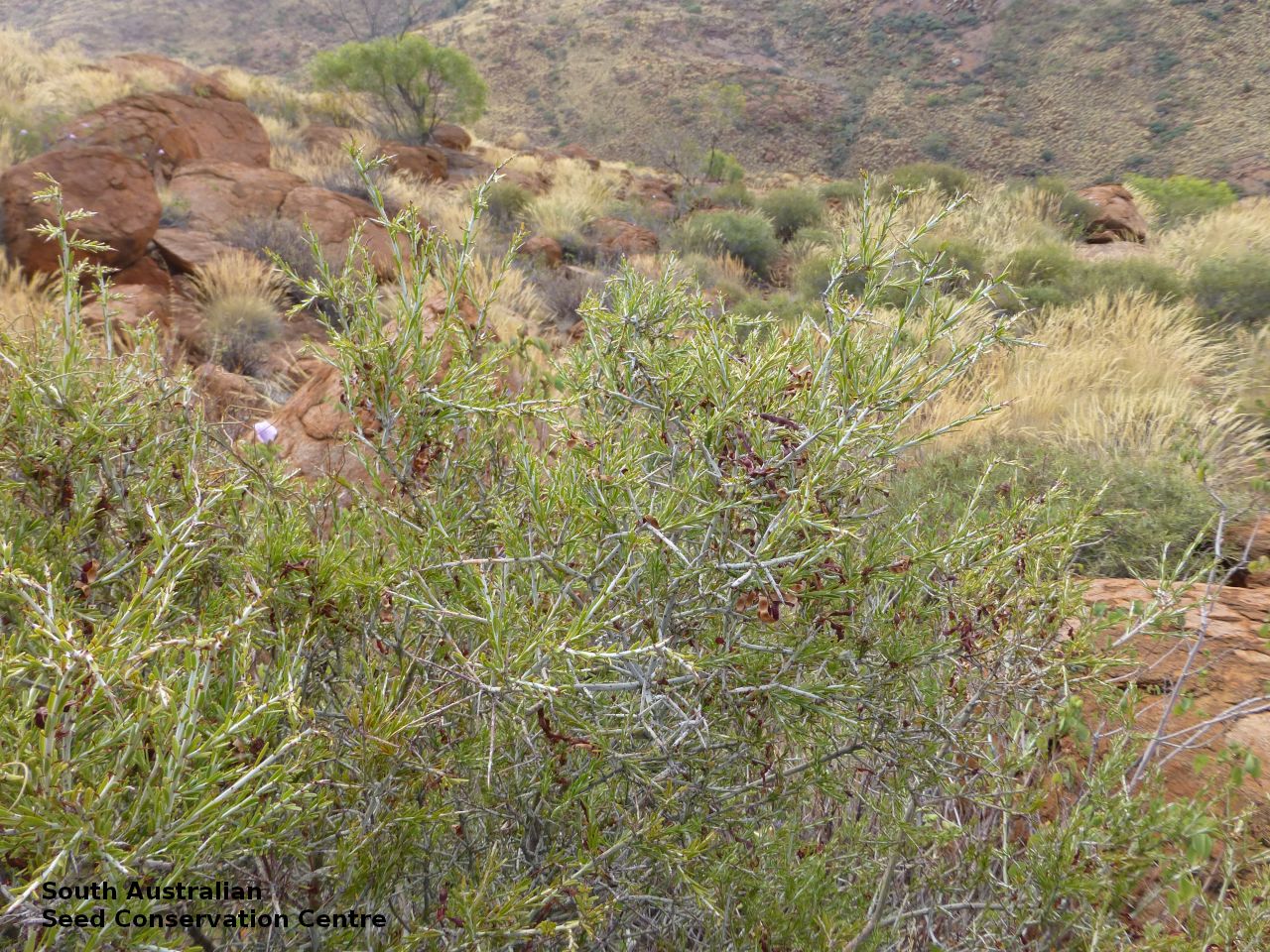
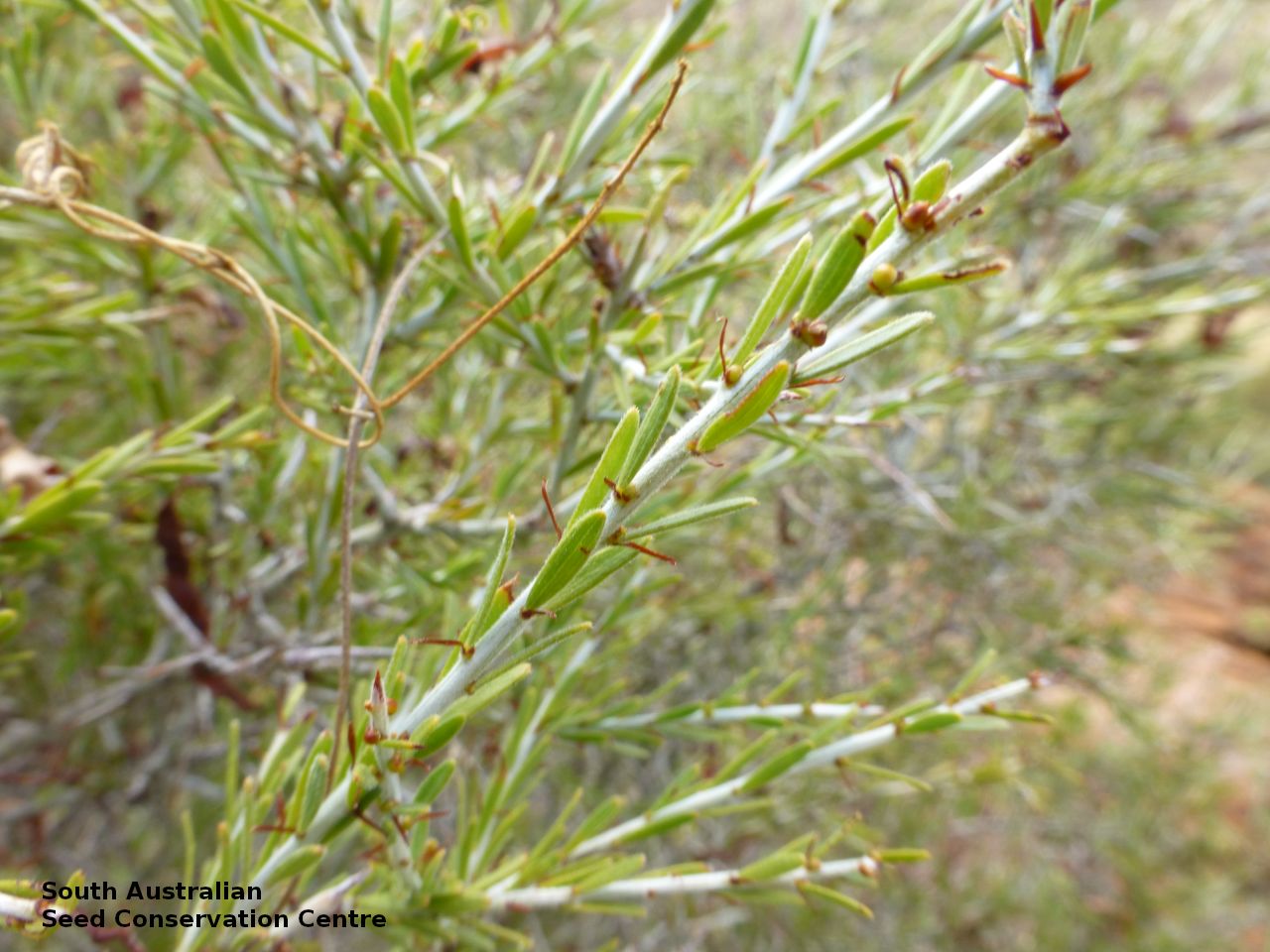
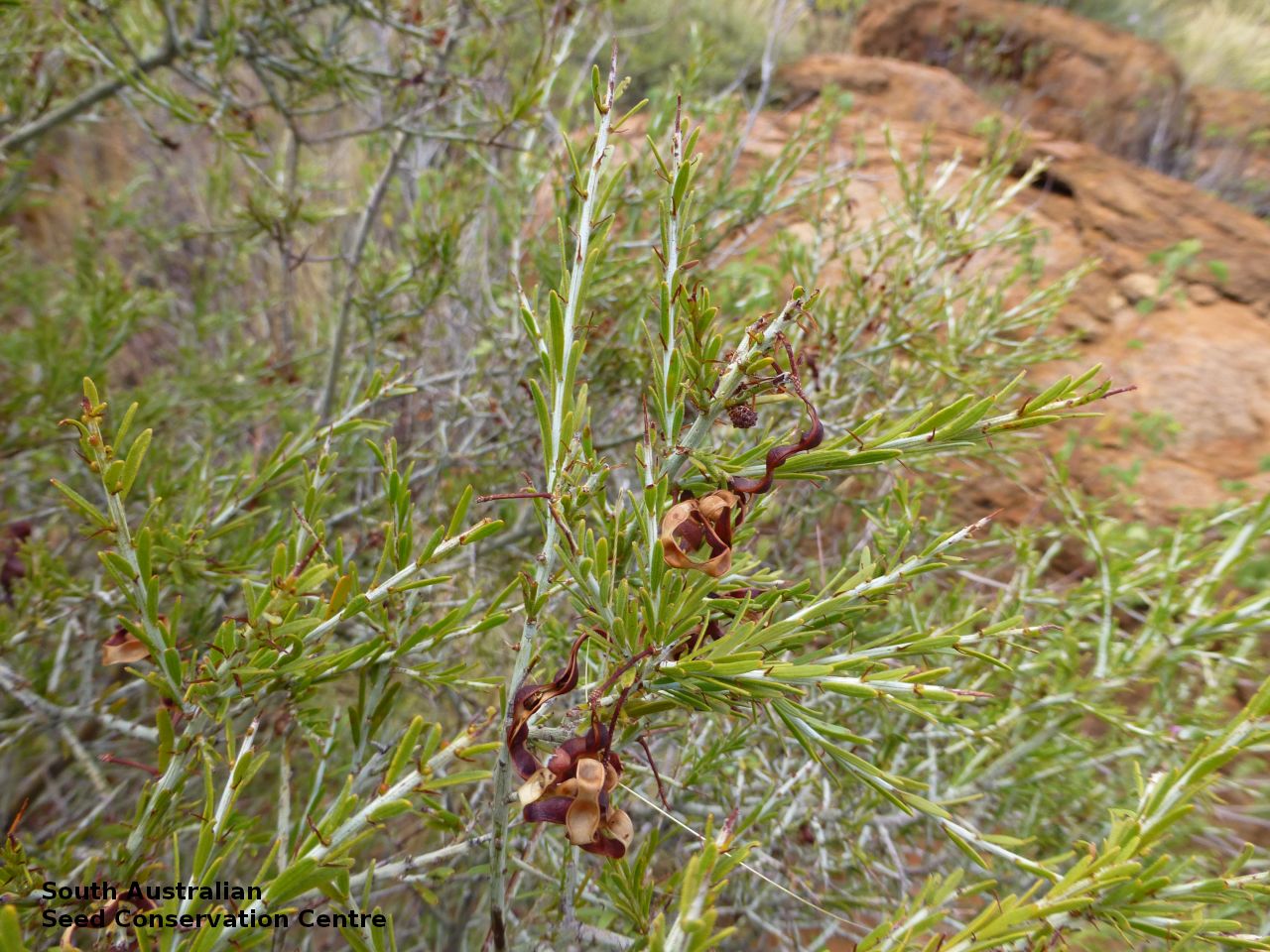
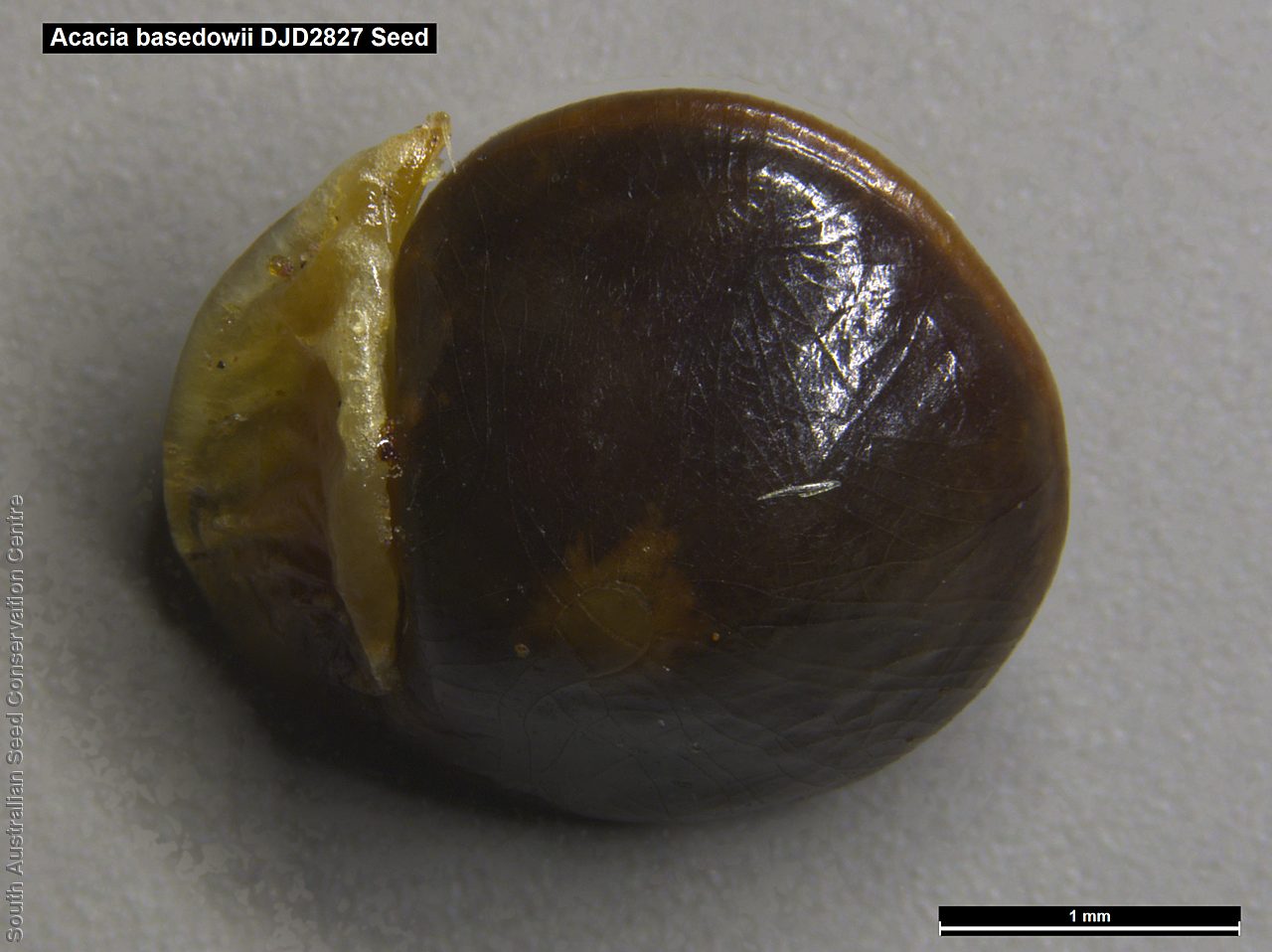
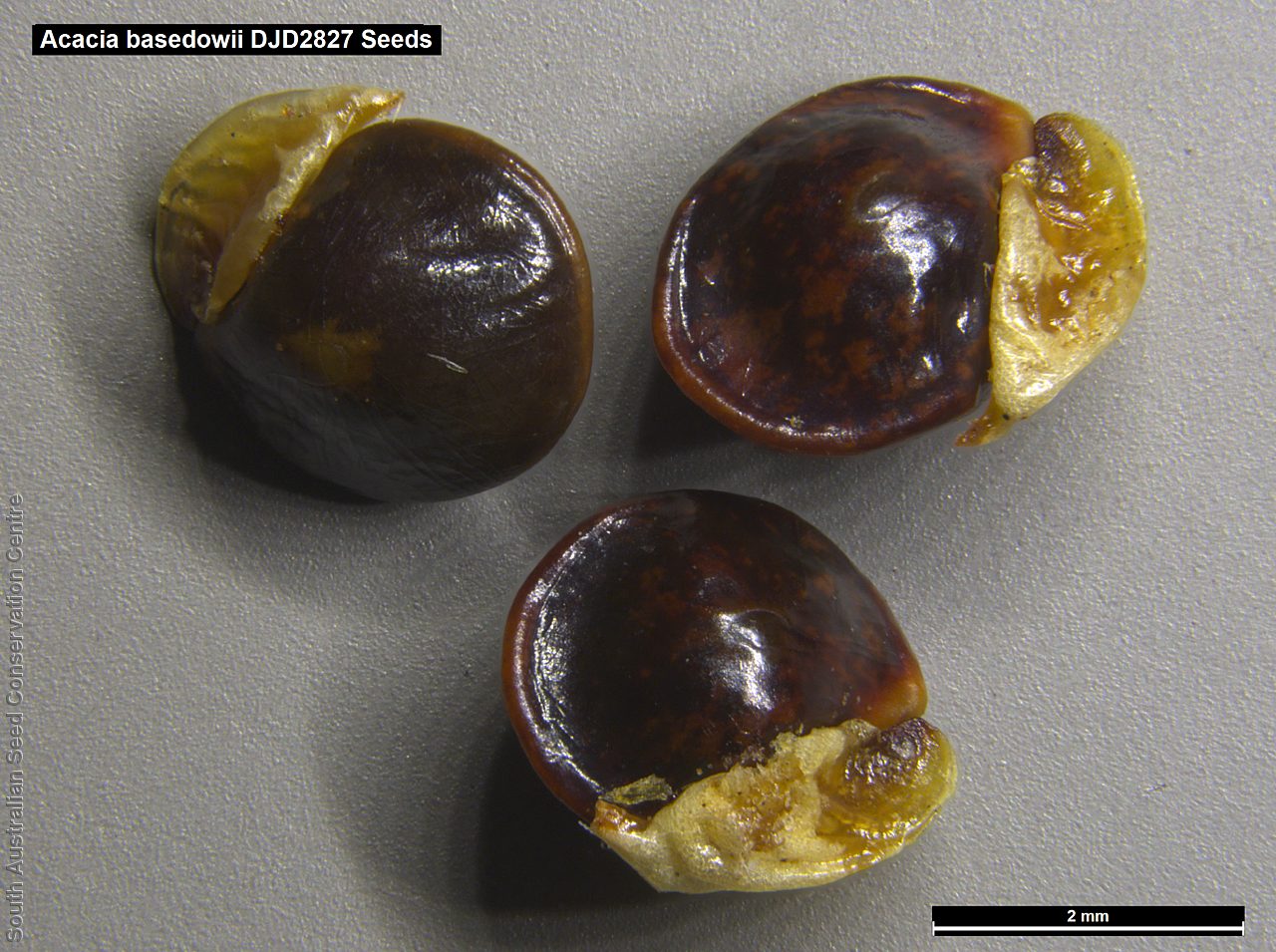
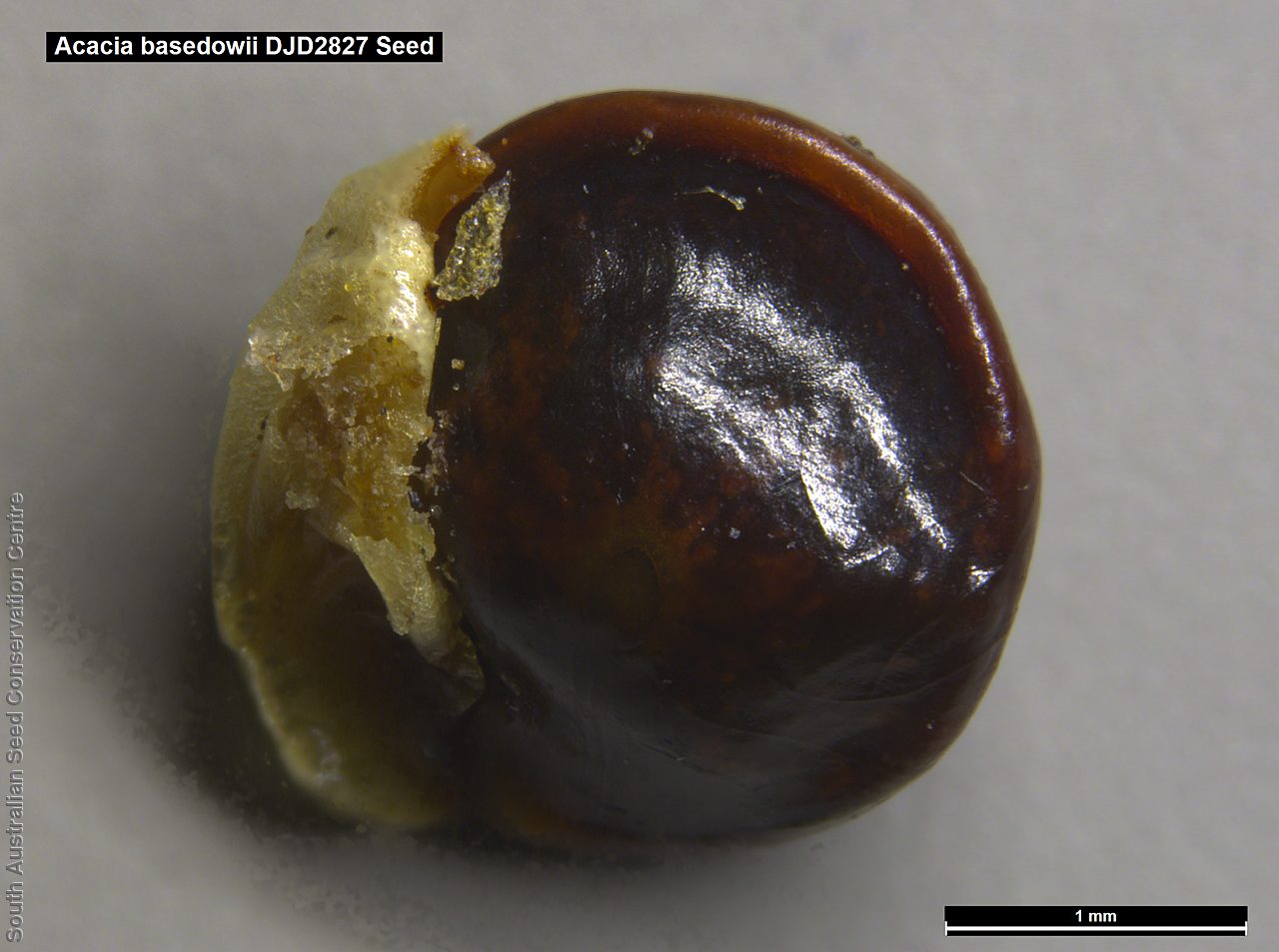


Botanical art
Prior names
Acacia ulicina var. oxyclada
Acacia basedowii var. viridis
Etymology
Acacia from the Greek 'akakia' and derived from 'ake' or 'akis' meaning a sharp point or thorn and 'akazo' meaning to sharpen. Dioscorides, the Greek physician and botanist used the word in the 1st century AD for the Egyptian thorn tree, Acacia arabica. Basedowii named in honour of Dr. Herbert Basedow (1881-1933), South Australian scientist and explorer, Chief Protector of Aborigines and Assistant Government Geologist in South Austalia (1910-1911). He collected the type specimen from the Musgrave Ranges in the Northern Territory in 1903.
Distribution and status
A very limited occurrence in South Australia in the North West region in the Musgrave Range area on rocky slope on shallow red firm sand. Also found in Western Australia and Northern Territory. Native. Rare in South Australia. Uncommon in the other States.
Herbarium region: North Western
NRM region: Alinytjara Wilurara
AVH map: SA distribution map (external link)
Plant description
Small, divaricate spreading shrubs to 1 m high. Branches slender, spinescent, pruinose but grey, reddish-brown as the whitish covering peels and flakes away; sprinkled with short whitish hairs but becoming glabrous when mature. Many of the older phyllodes fall away leaving an open twiggy appearance. Leaves oblong-elliptic to 2 cm long and 2 mm wide, thick, glabrous or sprinkled with hairs with 3-5 obscure longitudinal veins. Small gland beneath the short mucro. Inflorescences simple and axillary, solitary or twin with globular, yellow flower-heads. Flowering between June and October. Fruits are long, dark brown, curved or twisted pod to 5 cm long and 3 mm wide. Seeds are hard, dark brown, mottled, elliptical to globular seed to 3 m long and 2 mm wide. Seed embryo type is investing.
Seed collection and propagation
Collect seeds between November and December. Collect mature pods that are turning brown, with hard, dark seeds inside. Place the pods in a tray and leave to dry for 1-2 weeks or until the pods begin to split. Then rub the dried pods to dislodge the seeds. Use a sieve to separate any unwanted material. Store the seeds with a desiccant such as dried silica beads or dry rice, in an air tight container in a cool and dry place. This species has physical dormancy that needs to be overcome for the seed to germinate (e.g. nicking or softening the seed coat).